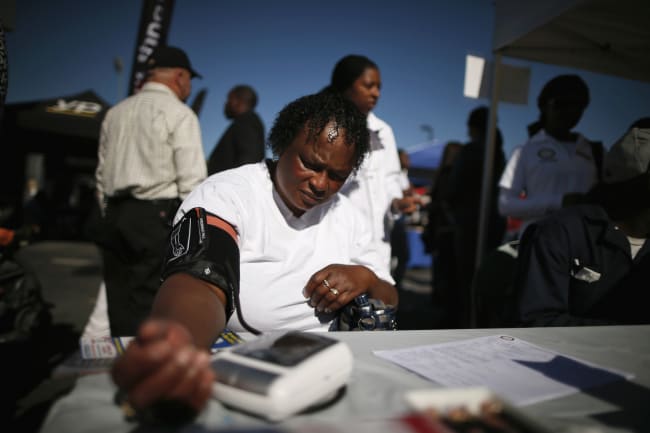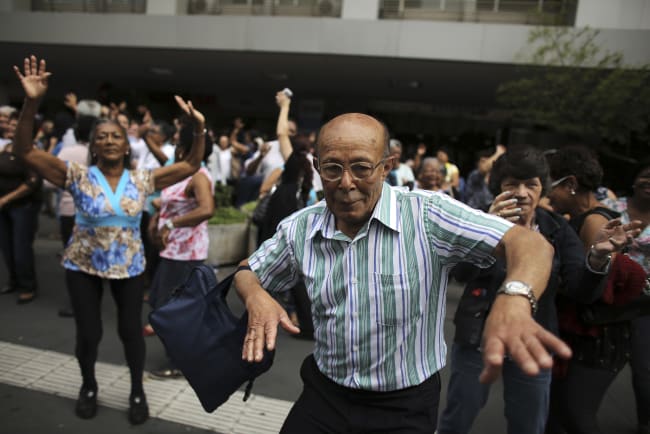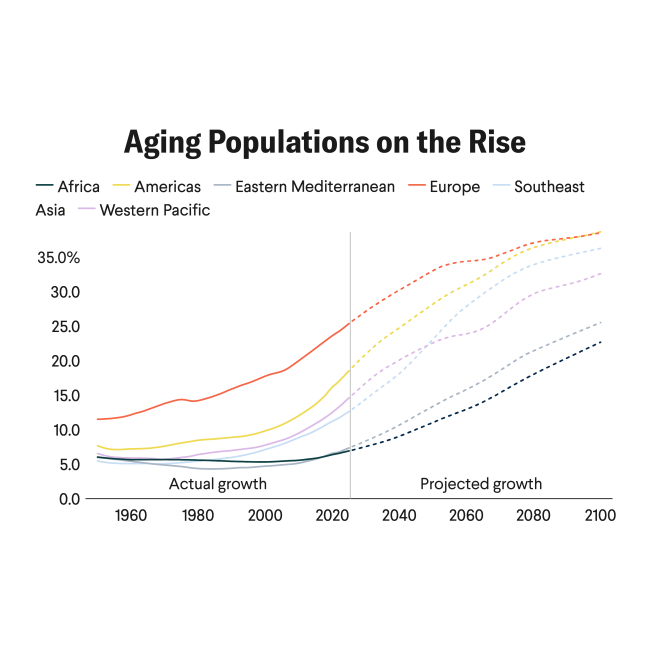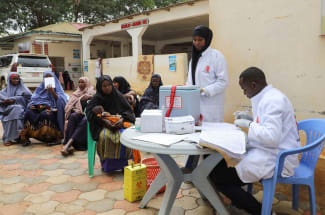As the world ages at a faster pace than ever, driven by increased life expectancy and dwindling fertility rates, few countries have received more praise from the international development community for responding to that demographic shift than Singapore. Faced with one of the most rapidly aging populations, the island city-state is on track to have a quarter of its citizens over the age of sixty-five by 2030.
First launched by the Ministry of Health in 2015 as the Action Plan for Successful Aging, Singapore's $2.1 billion aging program has been heralded by researchers as a potential global "blueprint" for its holistic approach to providing the country's elderly with a high quality of life.
Moving past simply building the country's supply and capacity for elderly long-term health care, Singapore's Action Plan stands out for confronting aging throughout the life cycle, with initiatives supporting community-building and extended activity for the elderly. Despite serving as one of the world's handful of success stories, however, its model highlights a global challenge in planning for population aging: how to address the disproportionate effect of aging societies on women.
Singapore's Action Plan stands out for confronting aging throughout the life cycle
Exacerbating Gender Inequity
Population aging presents manifold and interrelated implications for societies, ranging from reduced economic growth, higher disease burden and national health-care costs, social isolation, and increased economic insecurity among the elderly. Yet though the consequences are broad, their impacts are uneven. Women, in particular, bear the brunt of them.
The simplest reason women are hardest hit by population aging is that gender inequality compounds over time, and most older people are women, living on average six to eight years longer than men, Because gender disparities in employment opportunities and income exacerbate over a lifetime, elderly women are more likely to be financially insecure and must extend their reduced retirement savings over a longer period than their male counterparts. Studies have also found that elderly women living in poverty are more likely than elderly men to live alone, creating higher odds of encountering exploitation and abuse.
The Share of Long-Term Care Workforce Composed of Women
Women hold about 90% of the jobs, on average, in long-term care sectors across OECD nations.
Integral to this compounding inequity is what Megan O'Donnell, senior program officer of the Bill & Melinda Gates Foundation, called the "cruel irony" of population aging: women traditionally occupy caretaker roles, both as long-term care workers, aiding with basic activities of daily living, and as informal family caregivers. According to the United Nations, women spend more than twice as much time as men on unpaid care work for children and elderly individuals. In Organization for Economic Co-operation and Development countries, women account for nine in ten formal long-term care workers.
After a lifetime of caring for others, those women are more likely to face financial hardships given that health workers are undercompensated for their work. This scenario leaves them with fewer resources to afford their own long-term care. Adding to that burden is that women are more likely to be expected to care for their aging family members, imposing additional expenses and financial constraints as they age themselves.
Lessons from Singapore
Singapore's Ministry of Health proactively implemented Healthcare Masterplan in 2012 to "expand accessibility, enhance affordability, and improve quality of health care for older people." Despite the program existing for more than a decade, women remain the primary caretakers of elderly family members in Singapore, much like in the rest of the world. That reality illustrates the need for gender-conscious aging initiatives.
According to Singapore's Ministry of Social and Family Development, 60 percent of Singapore's informal caregivers are women. Of these, 35 percent are unmarried and middle-aged, usually at the highest earning ages of their careers, when they become responsible for an aging parent and typically reducing their hours or quitting their jobs to give them care. One Singaporean study calculated that caretakers, on average, lose 63 percent of their income once assuming responsibility for an aging parent. In effect widening Singapore's wage gap, as more women care for their parents for longer, the effects on their financial ability to care for themselves, the "caregiver retirement penalty," further amplifies as they age.
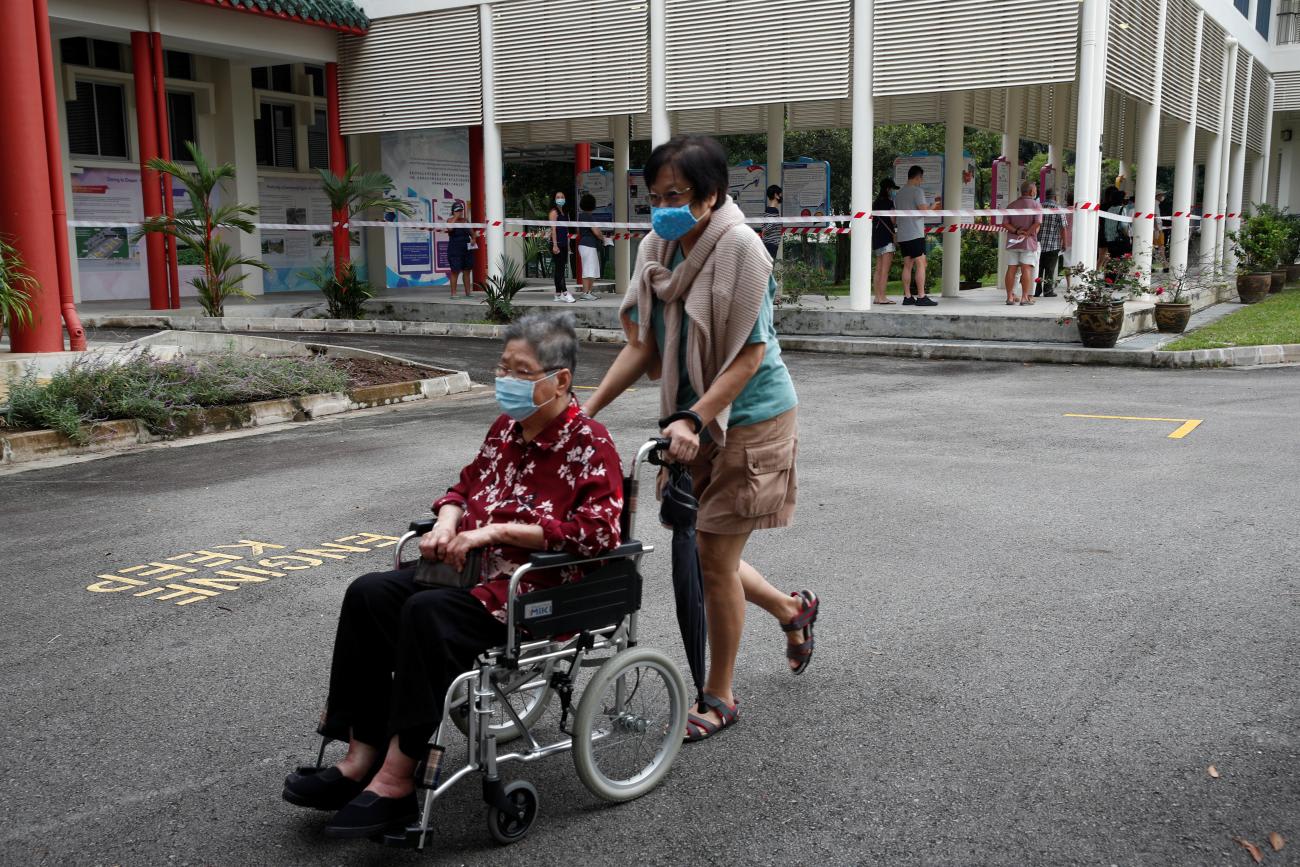
In acknowledgment of the role of family caretakers, the Singaporean Ministry of Health does offer as much as $15,000 in financial support for certain children caring for their parents who live near them. Other programs include monthly assistance for low-income families caring for elderly relatives and outreach teams for patients at home with dementia; further, the nation recently grew its fund to assist families with home health-care items and medical devices. Moreover, much of the $2.1 billion committed by the Ministry of Health has been directed toward boosting public health measures and strengthening primary health care, preventive care, and rehabilitation providers, all aimed at improving health outcomes over a life's course by reducing chronic illnesses and their subsequent costs. This, in turn, relieves some of the expense for caretakers.
Although these initiatives exist, Singapore's plan does not appear to discuss the gender imbalance of caretaking, nor does it explicitly distinguish between this critical difference in aging needs of women and men. The Action Plan for Successful Aging's strength is that it merges health and social care, with a whole-of-government approach mobilizing multiple agencies to provide more than seventy initiatives targeting education, community engagement, employment, income security, and protection for vulnerable seniors.
Some examples include active aging centers, where elderly individuals come for health activity and skills-building, as well as policies making public spaces more senior friendly, aiming to promote self-care, autonomy, and social connection. Senior activity centers provide income insecure seniors with a community space, community-based care, and even an emergency alert response system. Education policies, including SkillsFuture, a national program that provides every Singaporean age twenty-five and older with $500 toward skills-based courses, boost lifelong learning, ensuring that Singaporeans have the skills to succeed professionally and adjust to changing technology as they age. Programs like the Senior Employment Credit, which offers wage incentives for employers who hire Singaporeans over sixty years of age, further encourage employment opportunities for seniors.
Singapore's plan does not appear to discuss the gender imbalance of caretaking
In many ways, these programs do indirectly alleviate some of the burdens of aging that fall on women. By supporting certain caretakers with outreach and grants, extending senior employment through skill-building and incentives, and establishing community facilities, the plan promotes general health, social connection, and greater economic self-sufficiency for women as they get older and the parents they care for. Even so, single and married women are on track to remain the core caregivers. A 2023 Ministry of Health survey revealed that elderly individuals continue to prefer aging at home, indicating that this trend of informal caregiving will continue.
As the world inevitably gets older, the policies that make up our global response need to take on a more gender-conscious approach. To directly address the compounding caretaker penalty, some direct policy ideas include encouraging employers to provide more flexible employment conditions for women, government education initiatives geared toward women on personal finance and saving plans that take into account the burden of caregiving, and further funding childcare and elder-care resources.
Projected Percentage of Total Population Over 60 Years
The gendered responsibility of population aging in Singapore, a wealthy island with a population of 5.5 million, and robust financing systems, further highlights the gender disparity of aging on track globally. Although concerns about driving the birth rate down in developing countries have long dominated discussions on global development, 80 percent of the world's older population by 2050 will be living in low- and middle-income countries, lacking the aging infrastructure that Singapore already has.
When policymakers in Asia and elsewhere look to models like Singapore, they should aim to replicate its whole-government approach and life-course policies because these tackle some of the root causes of women's magnified challenge in adjusting to global aging. They should, however, also recognize that even with those policies, there will still be a need to respond head-on to the needs of women, many of them single, in either caring for their relatives or themselves. Whether through even more robust support of familial caretakers or policies explicitly targeted to elderly women, a blueprint for remedying this uneven responsibility is waiting to be written.



